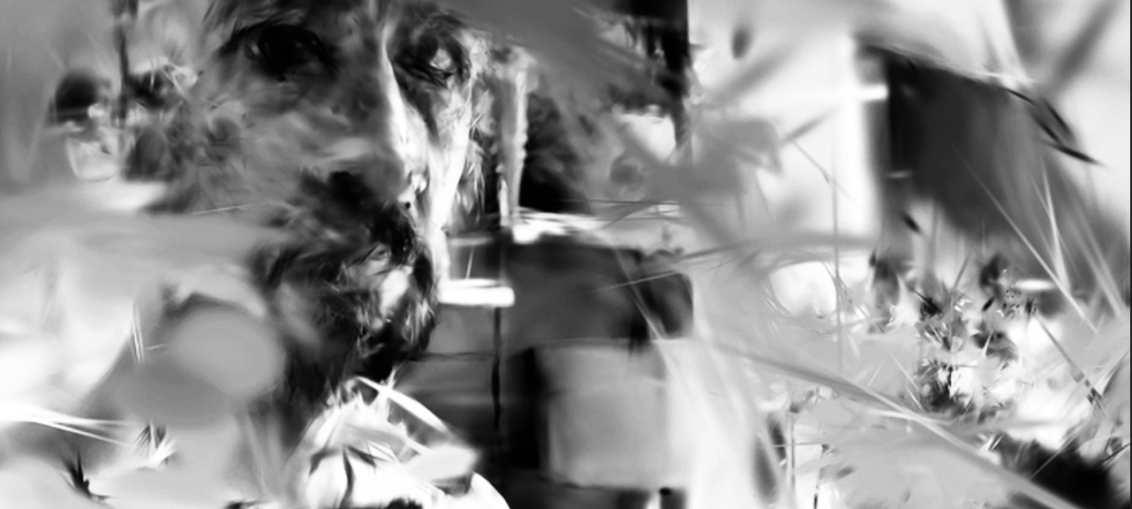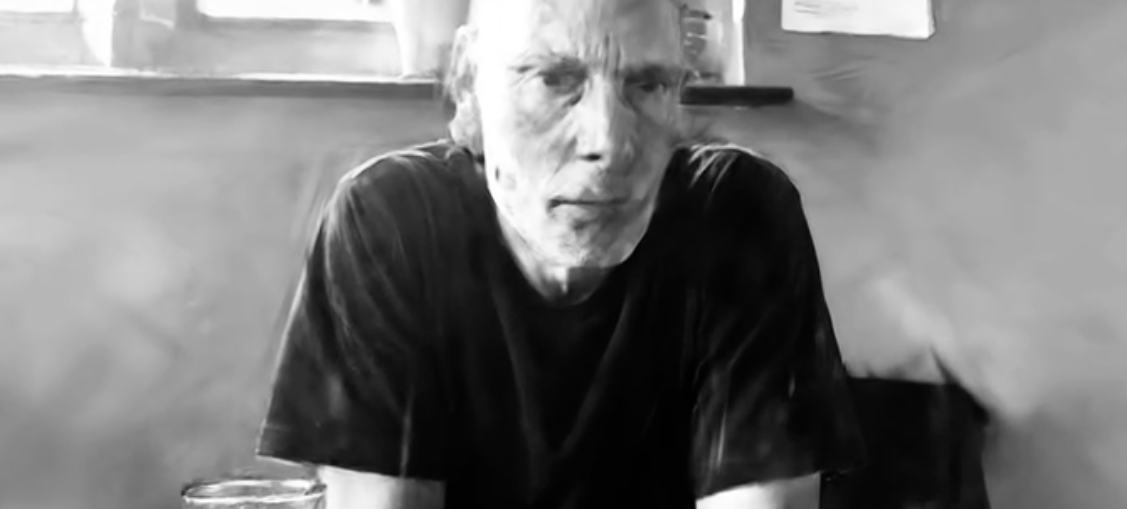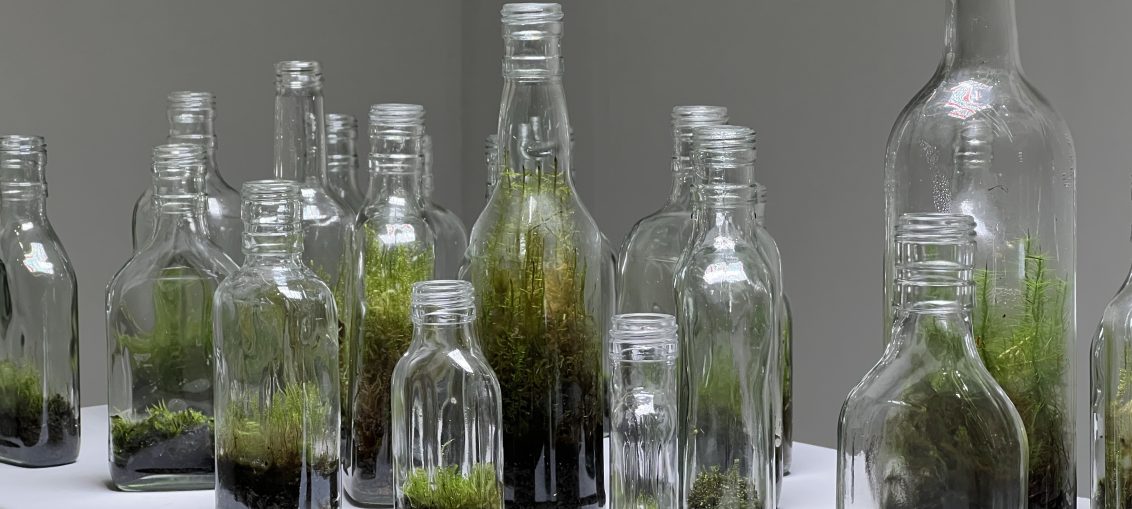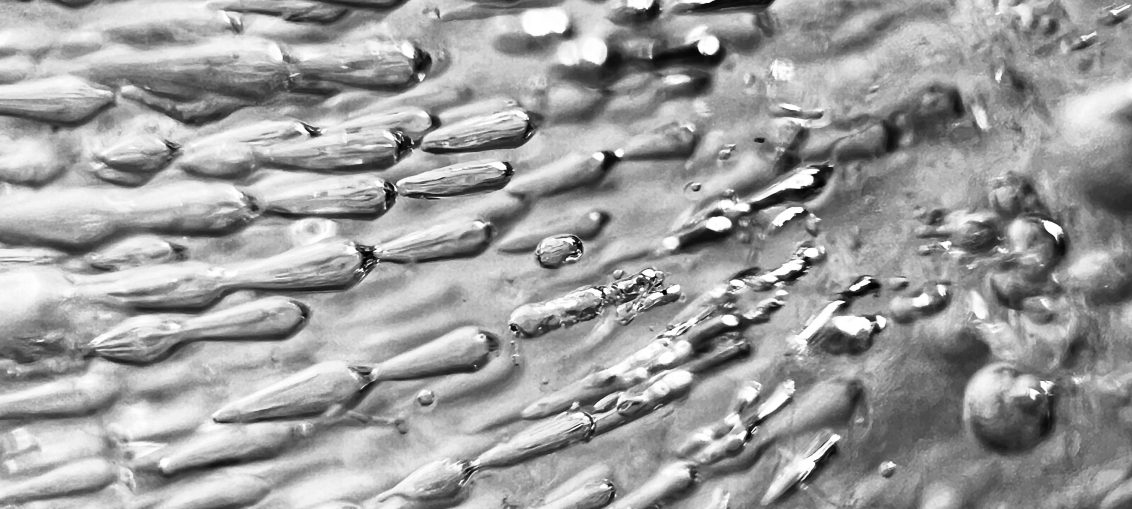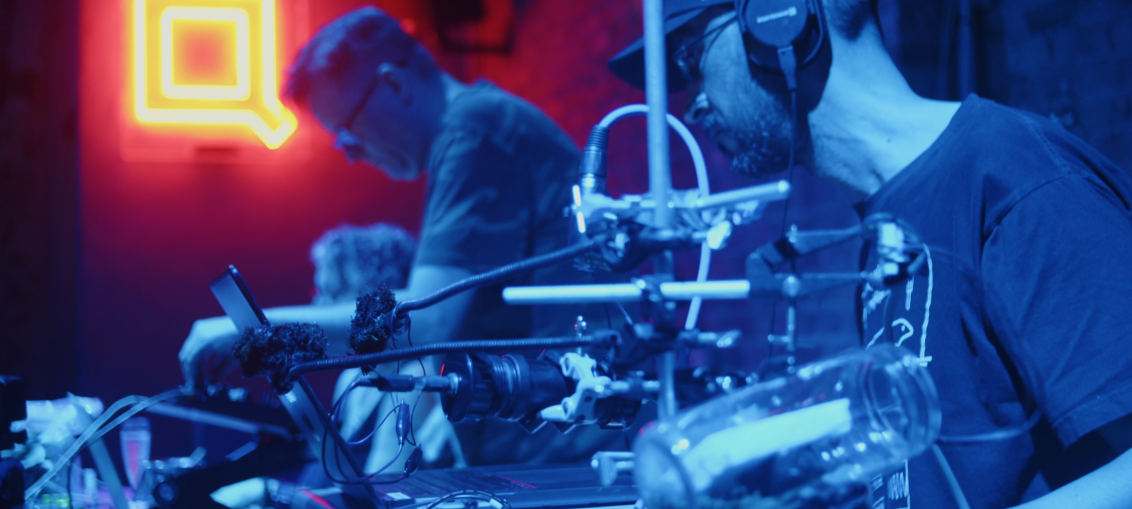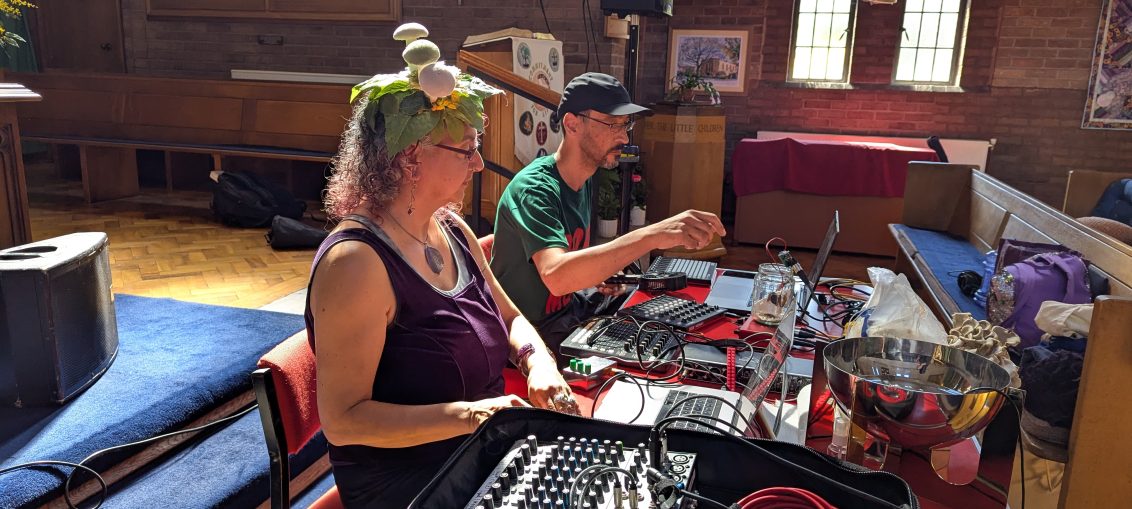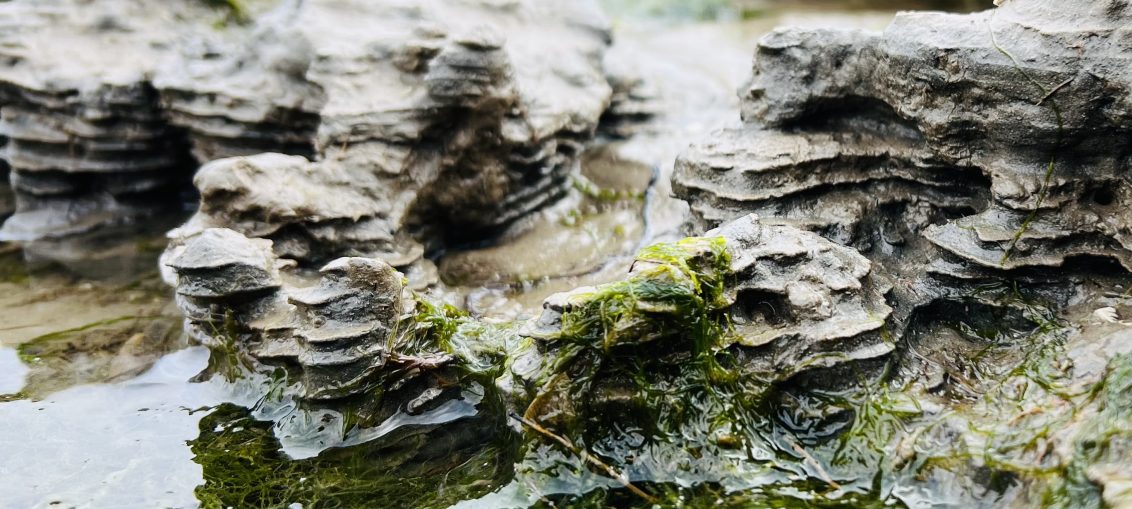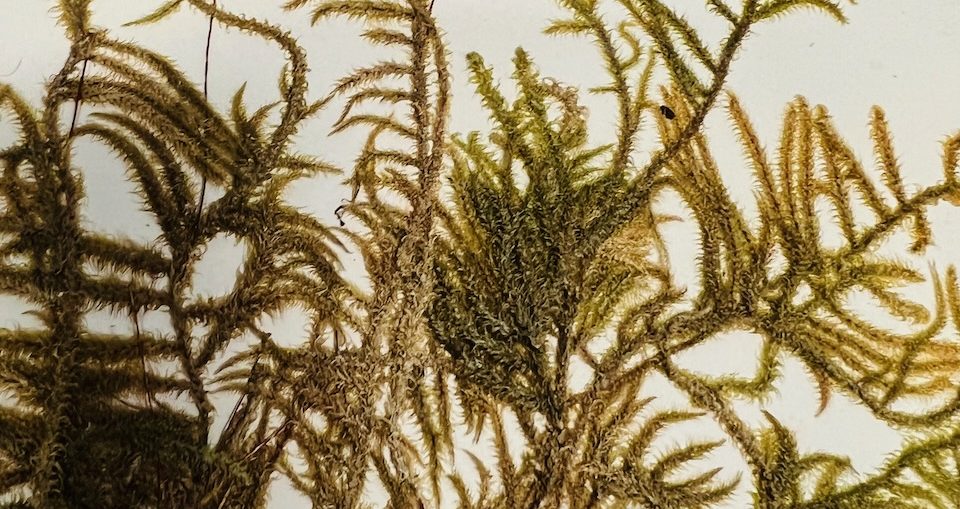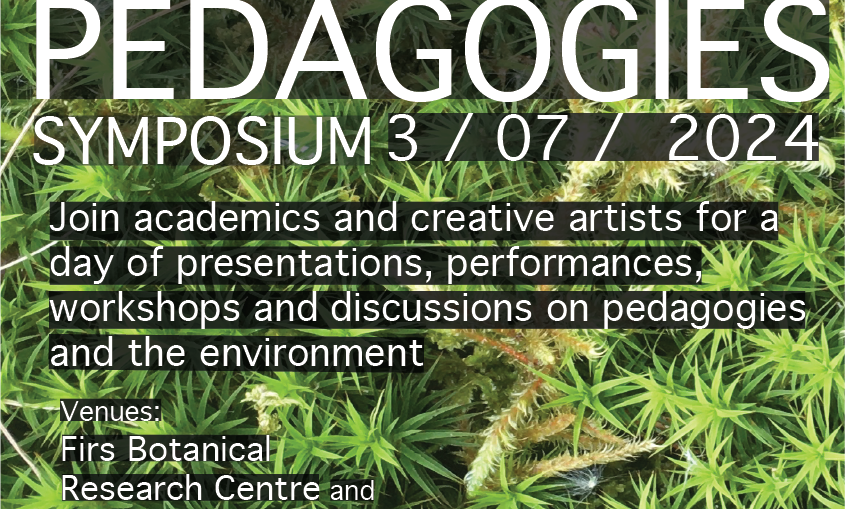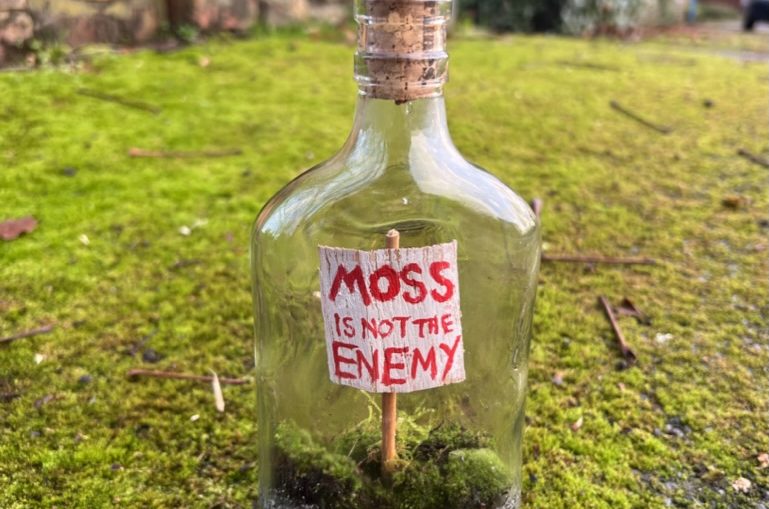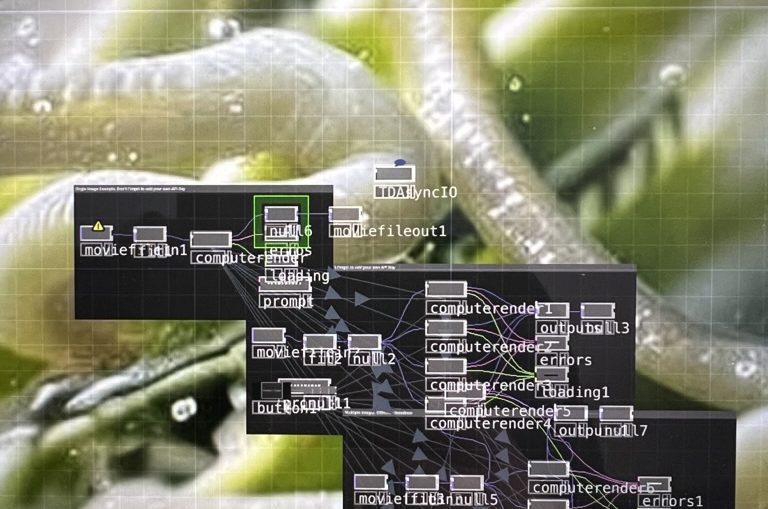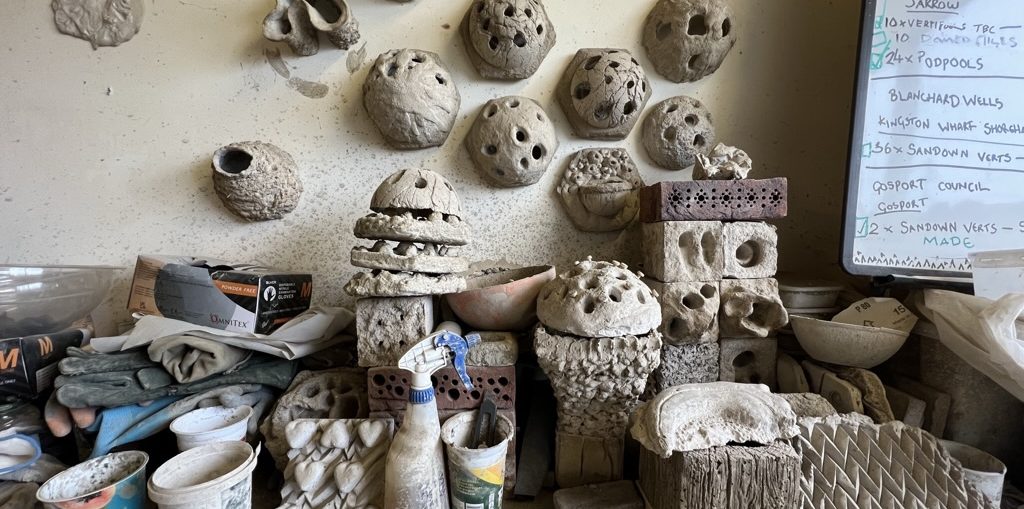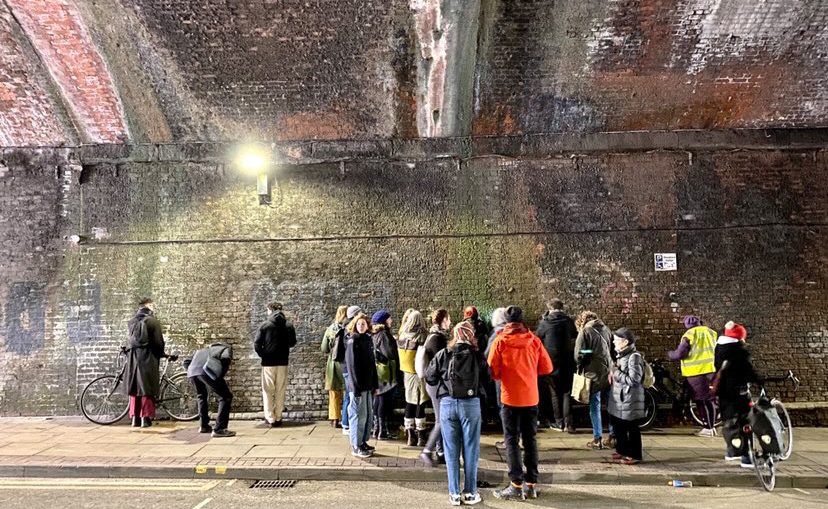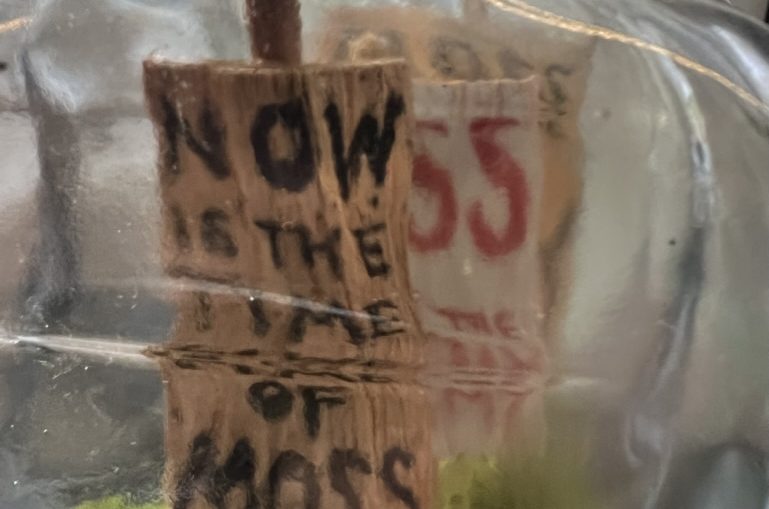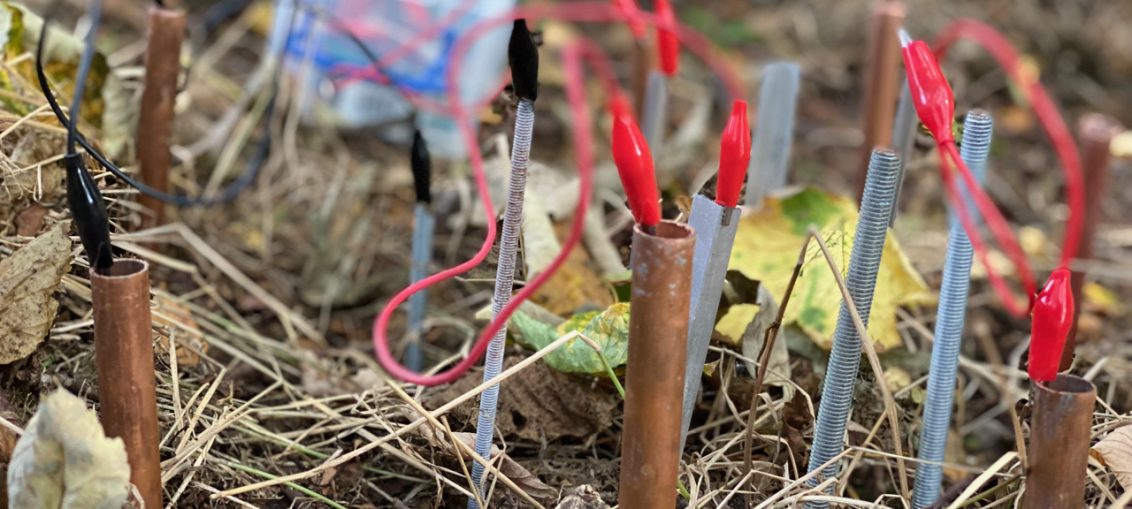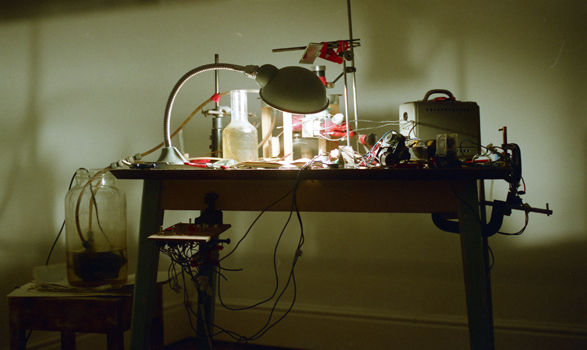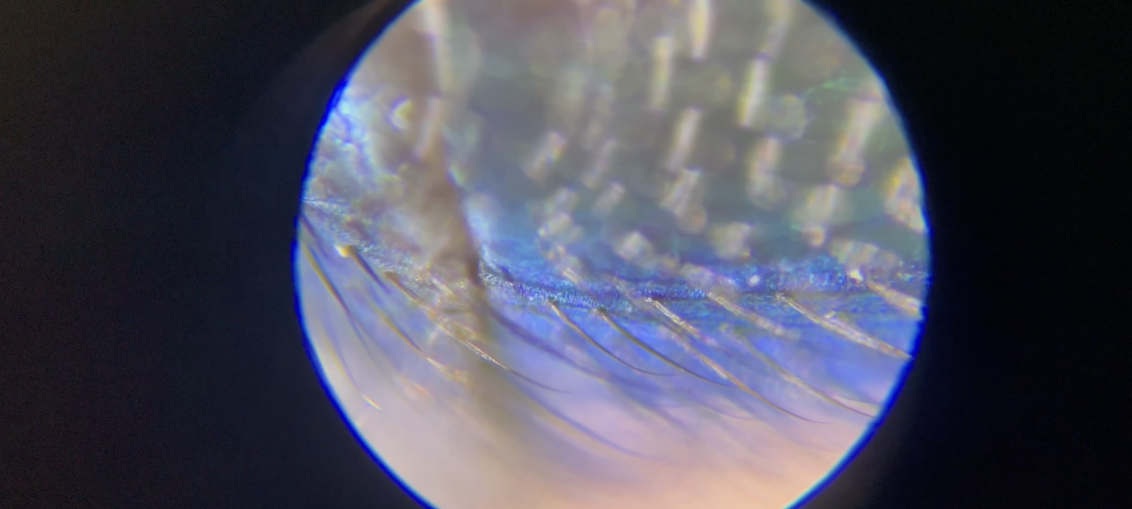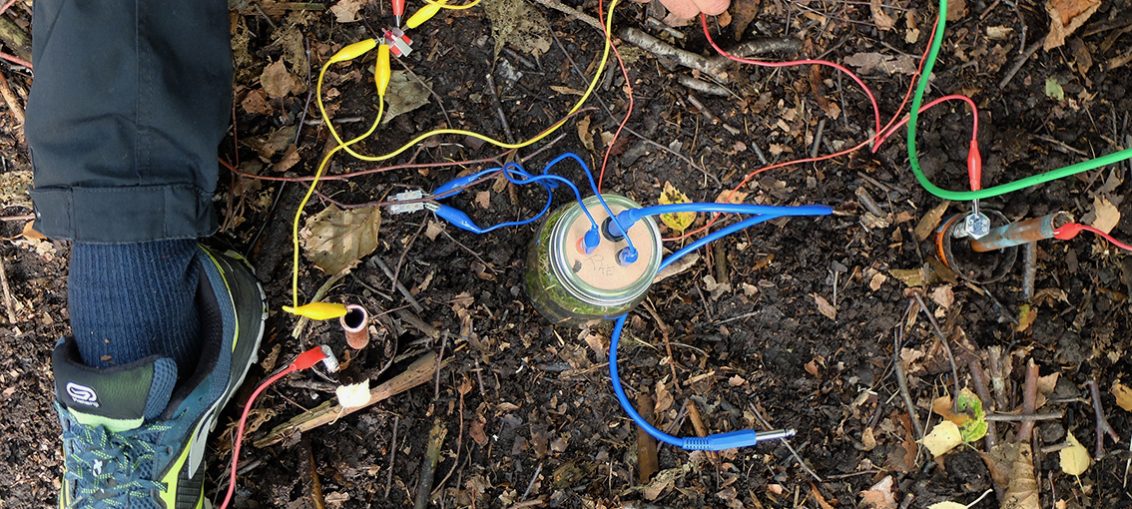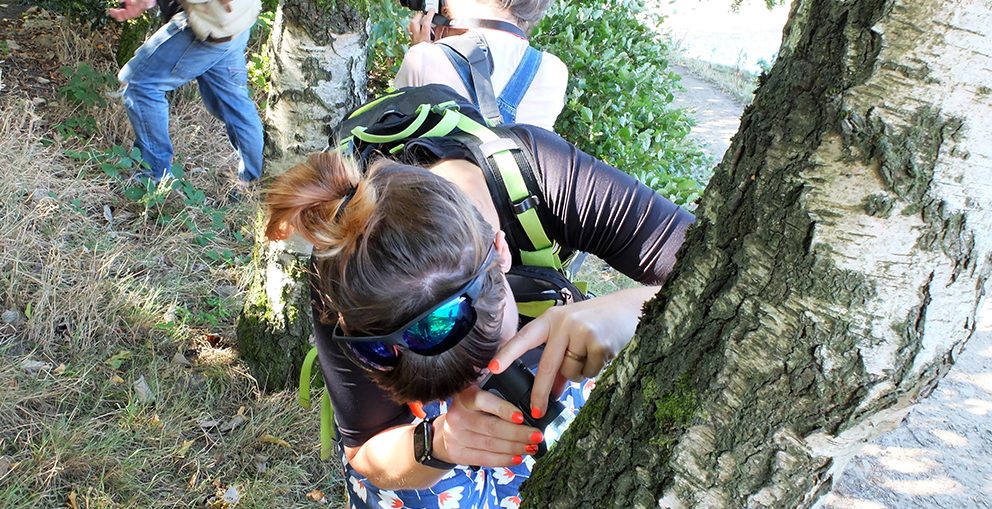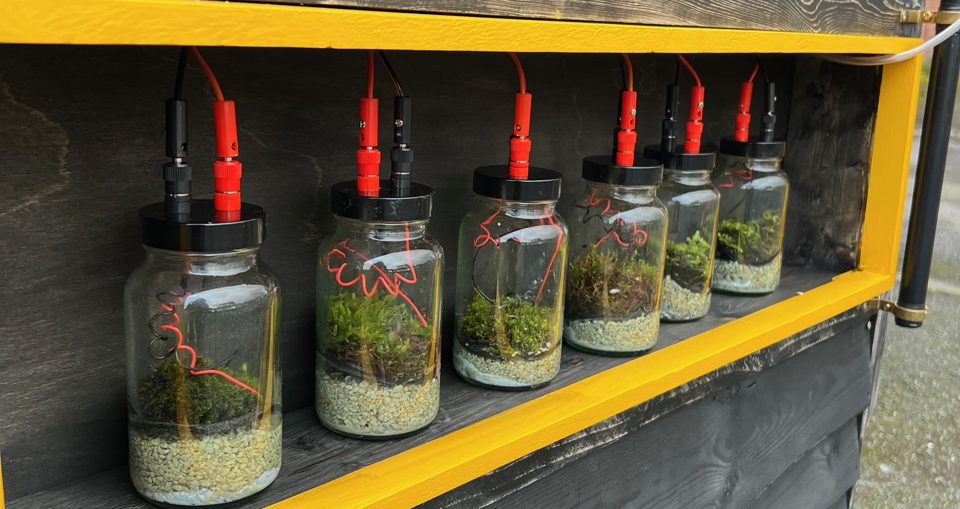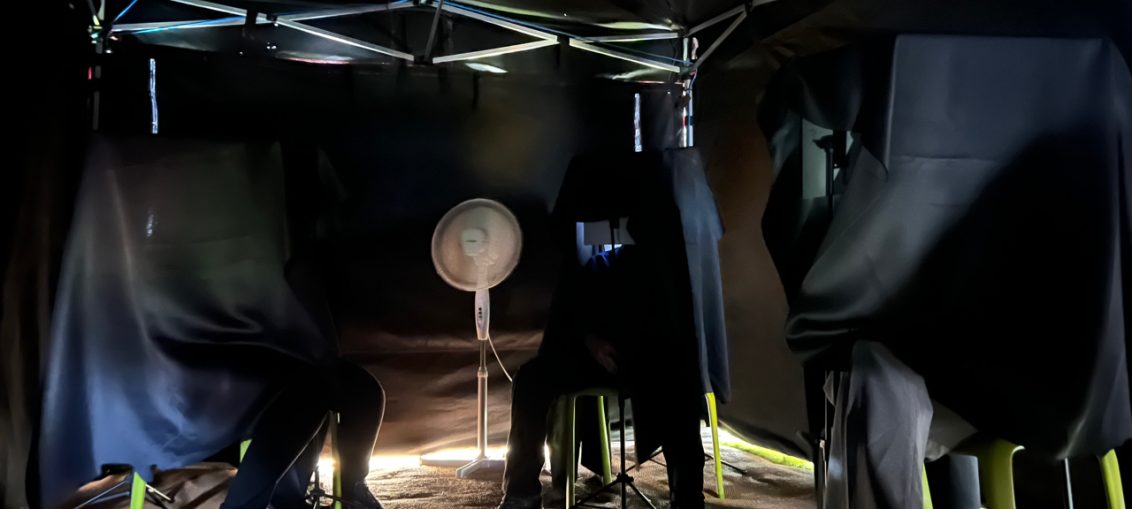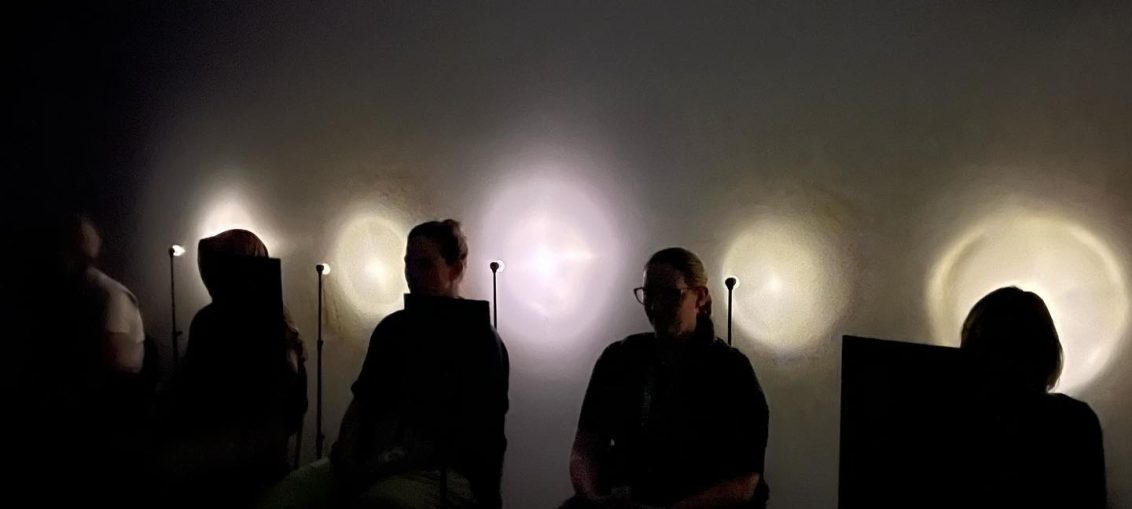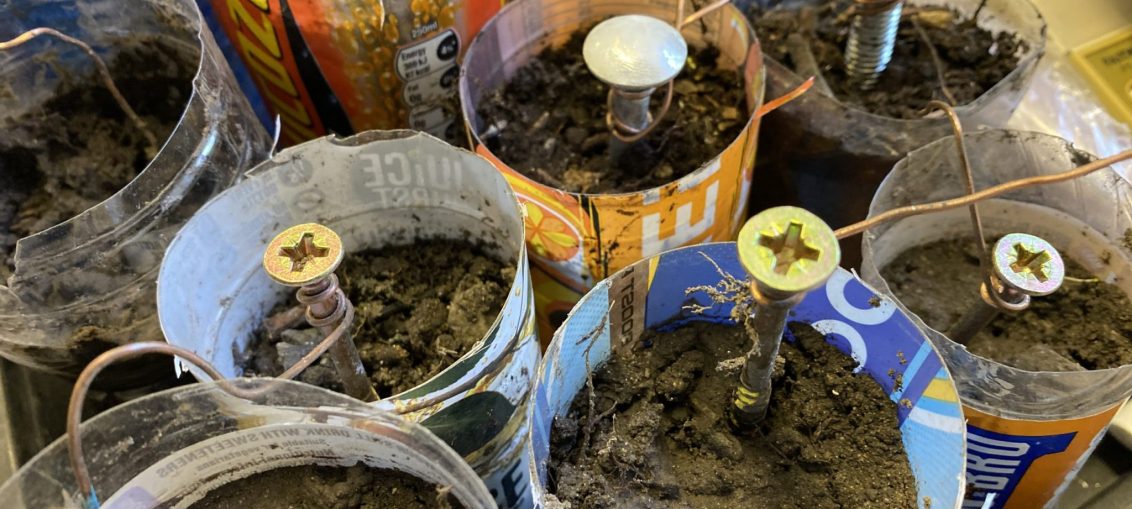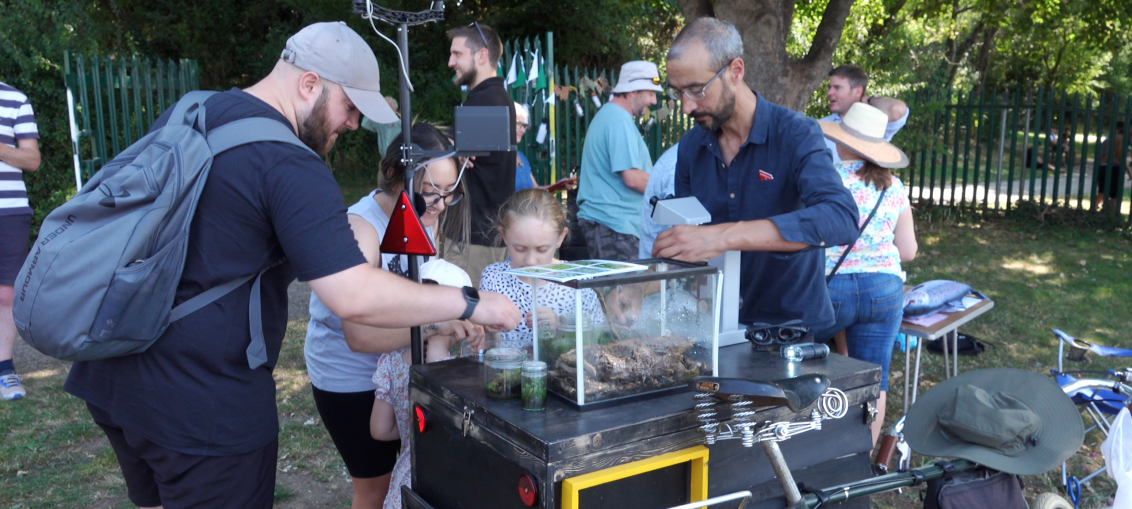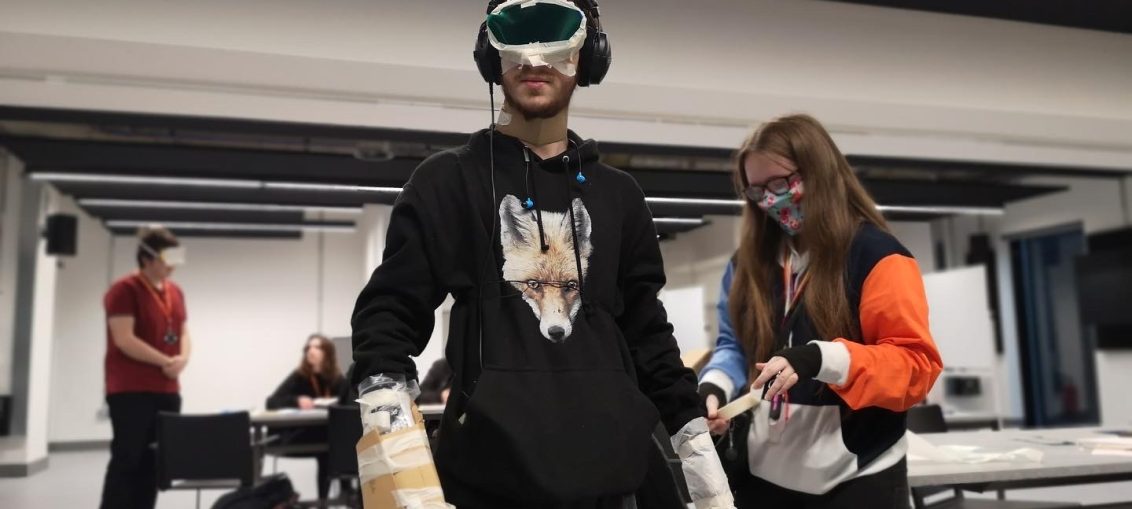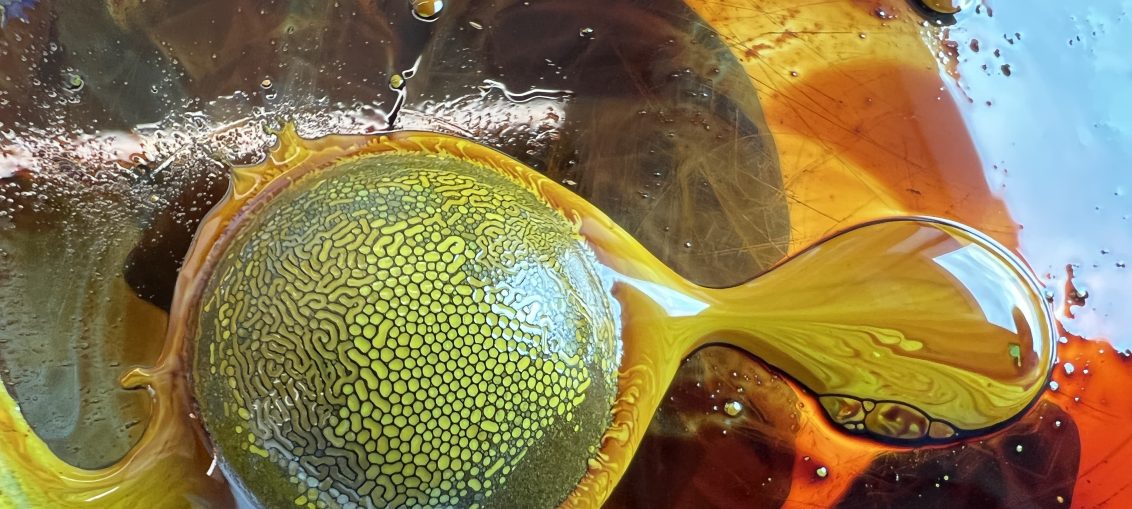Author: antonyhall
Portrait: Lex
Minute to Midnight – Exhibition Gallery Oldham
It’s not often I get to opportunity show my work in an actual gallery these days such is the plight of the socially engaged / process based artist, and it makes me remember how much I love the process of developing a dialogue with other artists and the space of gallery. And it is a delight to be showing along side some amazing artists. @verdant.city @adelecjordan@mishkahenner and @rebeccachesneyartist @galleryoldham A Minute to Midnight December 7 - March 1, 2025 So how does moss relate to climate change? Here are some interesting facts I put together for @sparkartistsnetwork and the forthcoming panel discussion: Moss is under threat: According to the 2023 IUCN Red List of the of moss in Britain , 19% are
States of being
Biokinetic Mantra for the Evocation of the Animistic Matrix
live performance with Maya chowdhry and Chris Gladwin. "This 30min live electronic music performance will feature organic components (mushrooms, moss, terrariums, water) being brought into contact with the ecstatic technology of dance music."I have recently returned to performing live and reawakened a part of my brain that had been dormant for a while. I'd forgotten how much I absolutely love the focus and intensity. The excitement of not knowing what's going to happen, or indeed sometimes wondering what is happening when something completely new emerges. Working with new collaborators has pushed me to explore new methods, leading to a number of fresh works in progress. Last month, I performed with Chris Gladwin and Maya Chowdhryat DVRK MASS II | Sonic Transformations: Ecosystems (organised by
Electronic Music Ensemble at Chorlton Arts FestivalElectronic Music Ensemble at
I performed as part of a line up from SODAs electronic music ensemble (which comprises of students, alumni and staff) at Chorlton Arts Festival, in Wilbraham St Ninian’s Church. I performed again alongside Maya Chowdhry continuing the ‘Biokinetic Mantra for the Evocation of the Animistic Matrix’ project - bringing together bioacoustics filed recording live electroaccoustics, and techno. This involved Darkling beetle larvae and rehydrating moss on hydrophones… Image: Neil Spencer Bruce SODAs electronic music ensemble 5691
Morecambe Bay walk
We were by the tumbling stream.
Ecopedagogies symposium
https://ecopedagogies.cargo.site/ Ecopedagogies Symposium 03 JULY 2024 - 11am-6pmHow can the integration of ecological interdisciplinary teaching methods in the arts and humanities stimulate creative and critical thinking about environmental relationships, rights, and responsibilities in the arts and humanities?Venue 1: The Firs Botanical Research Centre, UoM Panel 1: Ecopedagogies and the senses Chair: Clara Dawson Henry McPherson (UoM): ‘Ecological Improvisation’ Ghada Solimon (UoM): ‘Enhancing learning objectives through creative methods and hands-on activities: a case study of screen-printing using natural dyes workshops’ Ryan Woods and Raichael Lock (UoM): ‘Trees, ears and the space between: exploring pedagogies of reciprocity with primary school children in Manchester’ Moss walk to Manchester Museum, collecting mosses (led by Antony Hall, MMU/Spark Artists’ Network) Venue 2: Manchester Museum Panel 2:
Boundary detector drawing
Boundary detector, drawing 2024 Drawing of Boundary detector device, developed to accompany text for forthcoming publication with Glassball studio: Follow the development of this work here... https://antonyhall.net/blog/guideline-micro-commission/
Moss identification card deck
This card pack was developed for a moss walk for the Eco pedagogies Symposium 2024. The walk traced a route between the Firs Botanical Gardens and Manchester Museum. In this iteration of the moss workshop, I discussed my emerging "methodology of moss" and the role of art as a perception-changing device. To develop the card pack I photographed each species of moss I found along the route and created a card for each one, including information on the numerous biomes encountered. These cards not only aid my learning and memorisation of moss species but also include prompts, instructions, texts, and readings that will enable others to facilitate their own walking and moss workshops in the future.
MOSS IS NOT THE ENEMY
Touchdesigner experiments
This year I started working with Touch Designer https://derivative.ca/. TouchDesigner is a multimedia visual programming environment with a node based interface for “Creative Coding”. I am learning how to combine sensors as control inputs for video and sound, the generative aspects are also fascinating. It is a steep learning curve (with pythonic code to learn along side this). I will post progress here... View this post on Instagram A post shared by Antony Hall (@tonazoid) View this post on Instagram A post shared
Boundary detectors – mosscillator walk
A day of field work, walking and talking with @glassball.studio we walked across a segment of the Peak District national park boundary, connected our boundary detector up to a fence to create a strange radio like circuit (also connected with a bat detectors as signal transducer) we could hear strange sounds emanating from the either. Initially we discovered we could almost perfectly receive Radio 4. With some further tweaking / breaking we were able to get a multitude of voices - “Hello…Hello… “ one said as if speaking to us. View this post on Instagram A post shared by Antony Hall (@tonazoid)
Visit to Art Ecology
I visited the Isle of Wight to find out more about the Art ecology group and their #vertipool project (and generally chat about moss and urban / eco design). They have an Interesting ideology of hyper-local working and employ a methodology that resists consumerist mass production models (many #greenwalls and moss tiles are patented technologies that require energy and are tied into maintenance contracts. Alternatively Art Ecology take more of an open source socially engaged approach, working with communities and training people to help make the pools (which are best made by hands). This hand making approach allows for a greater speed of making and building in complex structural features, nooks crannies and overhangs, that would not be possible with
SPARK#9 Moss Walk
A couple weeks ago I took people on an urban moss walk for Spark#9 a monthly meeting organised by @sparkartistsnetwork @castlefieldgall . It was a short walk (only half of what I planned) mostly staring at damp walls under bridges. This particular bridge is host to an unusual (in an urban context) liverwort called Metzgeria furcate clinging onto existence in this cave like environment. Under another bridge just down the road, a more common but impressive Great Scented Liverwort - Conocephalum conicum grows in ring like formations over the walls (Liverworts are bryophytes like moss). We rounded up the walk at the recently reopened @mcrmuseum where we talked and made terrariums. It was heartening to have such a good turn out –
NOW IS THE TIME OF MOSS
Glint- Instagram residencey
What is it that I do?
The question, "But, what is that you actually do?" [1] was posed to me as an impressionable master's student [2] after having presented my entire portfolio of work; the question perplexed me because, at that time, my practice was still developing, and I still wasn't entirely sure what it was that I was doing. Later as an emerging professional artist discussing practice, this straightforward yet wise advice was given by a curator; 'Think of a thing that you do, and keep doing it' [3]. The thing was, even though there was clearly 'a thing that I did', having embarked on the foundational works that would inform my practice for many years to come, it took years to realise what it really was that I did. My Tabletop Experiments
DYCP – Funding 2022-23
I am delighted to announce I was awarded a DYCP grant from Arts Council England to develop my creative practice, enrich networks and also undertake training. I plan to meet mentors and fellow artists for a series of creative collaborations and conversations. Here are some highlights from the project: Highlights will be posted on this page while a series of posts are listed on the following tag: https://antonyhall.net/blog/tag/ace-dycp/ View this post on Instagram Moss Walk for SPARK artists Network A post shared by Antony Hall (@tonazoid) Now is the Time of Moss 2022 - A series of 10 terrariums created from found materials
Boundary Detector Workshop / Part – 2
17/09/2022 Second Workshop at Longdendale Environmental Centre as GUIDEline project with Glassball Studios: In this workshop, we continued to work on our boundary detectors; moss terrariums with carbon and aluminium layers which act as electrodes. In my test, I used moss growing on a carbon graphite felt layer (the anode), over a granular substrate of Zeolite (the electrolyte, but in the workshop, we used grit and mud collated from the boundary). The base of the jar is covered with aluminium foil (the cathode). As the moss photosynthesises and microbes do their thing - electrons are exchanged between the two electrodes generating electricity (more info on the science at end of this post). However, it is as yet unclear exactly how
Boundary Detectors workshop / Part – 1
1/09/2022 Workshop / Longdendale Environmental Centre / GUIDEline project with Glassball Studios: We met at Longdendale environmental centre for a day of walking and micro exploration, following a segment of the peak district boundary. The idea was to walk slowly, looking closely while collecting samples (microscopic creatures, plants, minerals, sounds), and explore how these things interact within the hypothetical space of the boundary space. Above: Image by Cora Glasser / Glassball Studios. We discussed 'boundary layers' the spaces or microenvironments existing on surfaces or between objects and the free-flowing stream of air (gasses, humidity) and light. Mosses exist at specific boundary layers, miniature forests which act like environmental bubbles, trapping moisture, and creating shelter. Moss and other small plants Algae, and Lichen
Moss batteries and art bike convoys (Newsletter Sept 2022)
Hi - I have a few things coming up that I am excited to share (and since I don't do newsletters often, I added a paragraph to cover the last 4 years). I also got some ACE DYCP funding which will keep my research on ecology and perception going into 2023! This summer, I have been busy with Field Station at Art bomb and exploring the Peak District National Park boundary as part of the GUIDline project with Glassball studios. This week I am showing at the British Science Festival Leicester. Next week I am exhibiting with the para lab group (showcasing collaborations between artists and scientists) and running a moss and micro-terrarium workshop as part of Unintended consequences at Quarry Bank Mill. Follow hyperlinks or scroll down for dates
Mirror gaze experiment at British Science Festival 14th Sept.
Documentation from the Mirro Gazing workshop as part of the British Science Festival 14th Sept. The workshop was broken into 20min slots over the day and took place inside a black-out tent on the grounds of De Montfort University outside the gallery. View this post on Instagram A post shared by Dr. Antony Hall (@tonazoid) https://britishsciencefestival.org/event/seeing-is-believing/ Book Tickets here https://britishscienceassociation-tickets.ticketsolve.com/ticketbooth/shows/1173626542
Manchester Vision Network 2022 Research Showcase
It was fascinating to run a workshop on the strange face illusion during the Manchester Vision Network 2022 Research Showcase with many scientists from a range of different fields... NEXT UP: British Science week Sept 14th 2022 "..the fifth staging of this annual event provides a multidisciplinary forum for clinicians (including ophthalmologists, optometrists, orthoptists and specialist nurses), researchers and technology developers interested in ophthalmic and vision science. Our main aim is to stimulate individuals from different fields to exchange ideas and potentially establish fruitful collaborations... More info... Mirrors ready for the workshop Mirror Gaze Experiment - Experience in progress...
GUIDEline Micro-Commission
Exploring the nature and origins of the first National Park and its boundary. I have been commissioned as part of the GUIDEline project by Glassball Studio. Over the summer Alison Lloyd and I will be working alongside Glassball, continuing a conversation that started back in 2021, bringing our practices to the boundary of the Peak District National Park, using the Longdendale Activity Centre as a base from which to explore. Here are some outcomes, ideas and works in progress so far... Walk with Tim Cambel-Green View this post on Instagram A post shared by Dr. Antony Hall (@tonazoid) Walking with Tim - exploring these
Imagine you are walking
How long does it take to imagine an action? I have been thinking about motor observation and motor imaging as part of the Experience in Action project with BEAM Lab. How does imagining or observing an action affect how we later perform that action? I know that before I do anything significant I imagine it or visualise it, a mental simulation repeating over and over many times. I will plan to make something in my head, in my own personal imaginary 3-D workspace before making it. However, I have never thought about how long these things take to imagine. In the following visualisation activities - I became aware of how my thoughts cycle in loops at speed, often viewing the situation
Field Station at ARTBOMB 22
Joana Chicau - Chris Dobrowolski - Antony Hall - Jola Kudela - Rob La Frenais - Loré Lixenberg - Dave Lynch - Matthew Rosier - Sidney Sparks - Filipos Tsitsopoulos - Miranda Whall Inari - Linda Cassels We are in a Climate Emergency and our festival will help you consider what you can do to help. ArtBomb 22 is Doncaster's experimental arts festival and designed to help provoke debate across current environmental and ecological thinking...by commissioning world-class art to spill onto the streets of Doncaster with a programme of performance, film, music, talks and workshops across multiple sites - including the architectural jewel in the crown - Doncaster's Unitarian. View this post on
Perception changing device workshop 2022
These workshops took place at the School of Digital Arts (SODA) as part of the 'Co-Lab' unit, which is intended to get students working collaboratively across disciplines (Game design/sound/future media/film/photography). The 'messy interface' brief asked students to address the complex interface between real and unreal. My workshop was designed to get students working together and thinking about how our senses interact and how we can hack, or creatively disrupt the sensory interface. We looked at the long history of perception-changing technologies; from the microscope to early VR experiments, and the many strategies both artists and scientists have used to disrupt these technologies. After exploring some perceptual illusions and discussing our experiences, participants designed their own multisensory experiments that restricted, augmented,
Ferrofluid Workshop
Highlights from a workshop using ferrofluids with young people as part of National Saturday Club for the Photography dept. at School of Digital Arts (SODA). Ferrofluid is a fascinating material with alien-like behaviours. We used macro lenses and experimented with moving magnets using a motor and adding inks and dyes with mesmerising results. If you are interested in this workshop please contact me info(at)antonyhall.net
